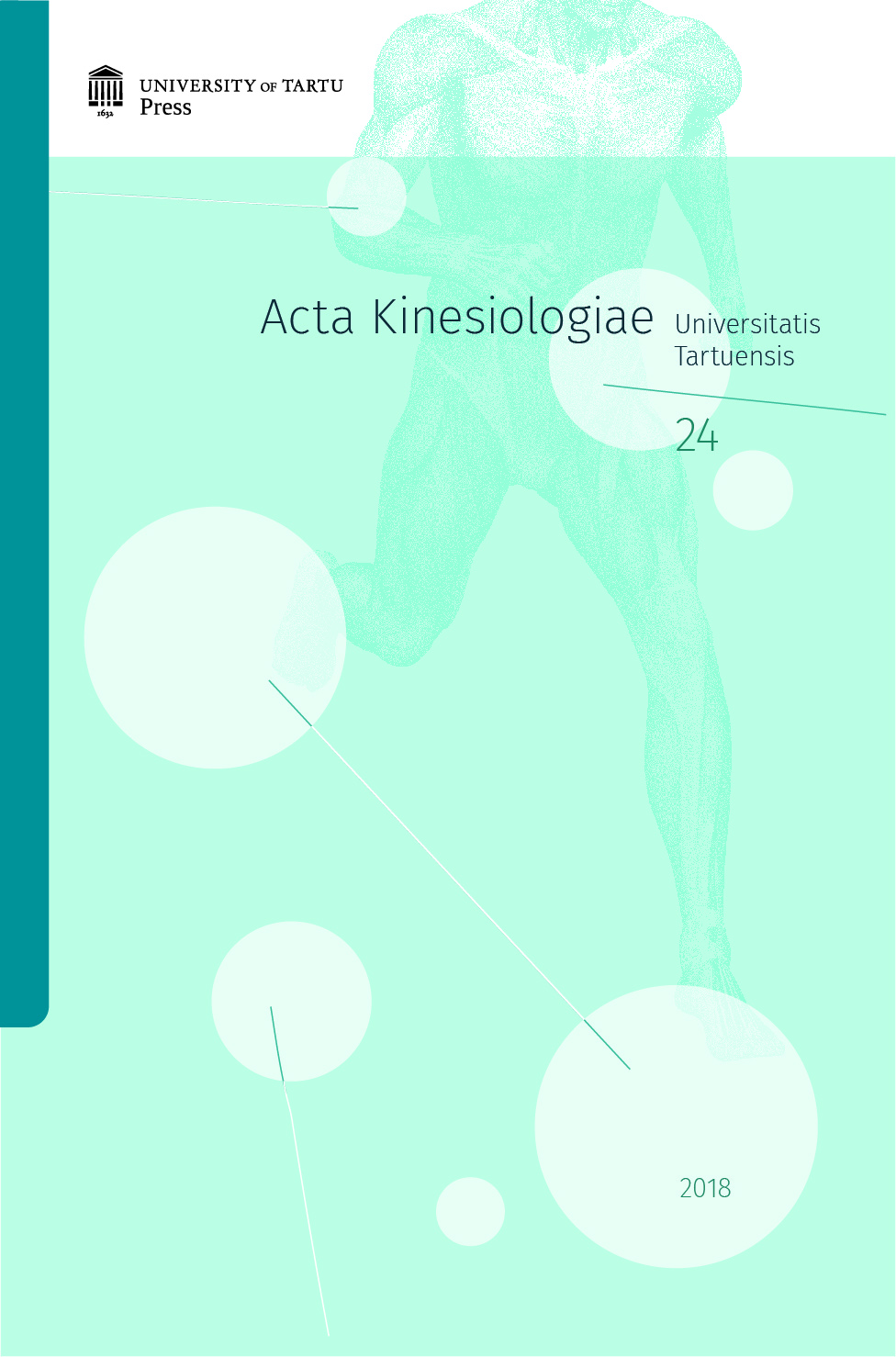Changes in leisure-time physical activity levels and perceived barriers among Estonian adults over a two-year period
DOI:
https://doi.org/10.12697/akut.2018.24.01Keywords:
leisure-time physical activity, national survey, sociodemographic groups, barriers, EstoniaAbstract
The aim of this study is to describe the changes in leisure-time physical activity (LTPA) levels among the Estonian adult population in the years 2013–2015 in order to examine the relationships between LTPA level and socioeconomic status (SES) and health indicators, and also to explore perceived barriers to LTPA. Data from the National Physical Activity Survey were used. The sample consisted of 1009 participants aged 15–69 in 2013 and 1004 respondents in 2015. The proportion of Estonian adults exercising regularly at least four times per week increased from 39% in 2013 to 45% in 2015. Being in the older age groups increased the odds for physical inactivity 2.07–4.74 times compared to the youngest age group (15–24) (p<0.01). Having primary, basic, or secondary education increased the odds of being inactive 2.33–3.14 times compared to respondents with higher education (p < 0.01). The most prevalent barriers to physical activity reported by inactive adults were: 1) the absence of interest or unwillingness to make an effort, 2) tiredness at work, and 3) lack of time. In conclusion, despite a slight positive trend, LTPA levels are low. As the perceived barriers depend on age, public health strategies should involve age-specific solutions, especially for older adults.


